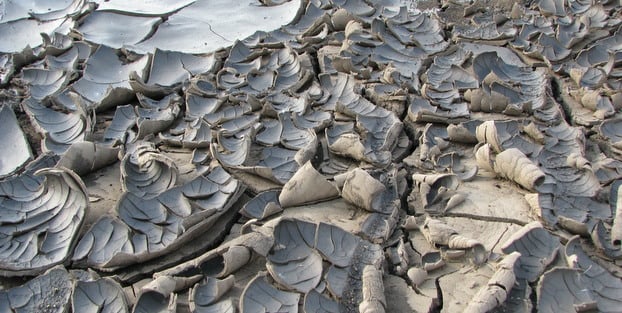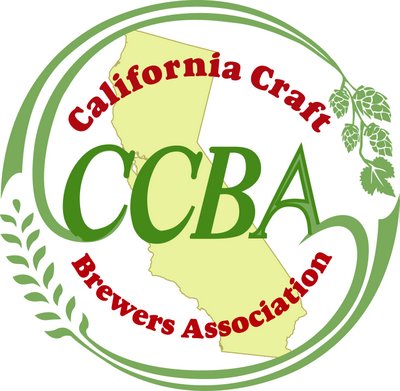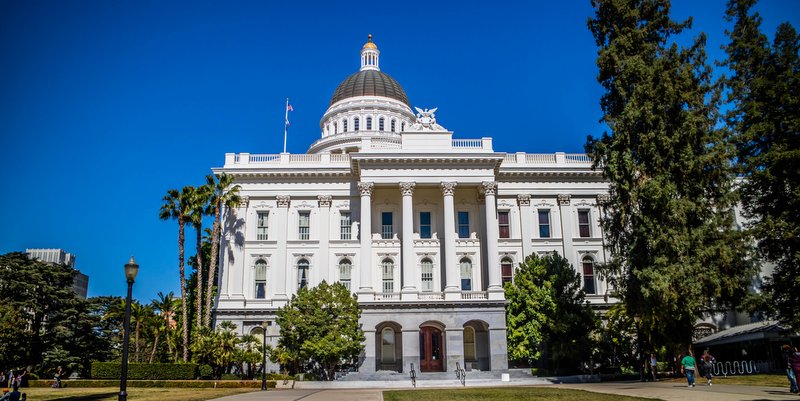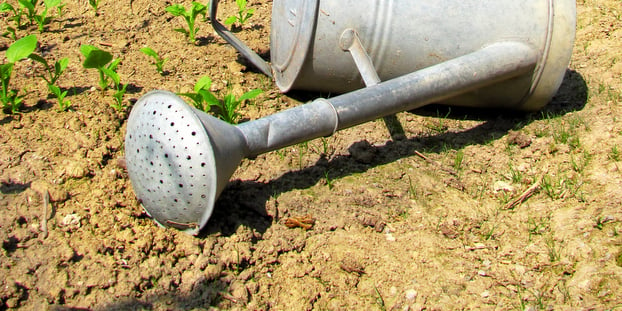
The state of California is in the middle of a pretty substantial drought. The state of California is also one of the premier craft brewing regions in the country. Brewing requires a lot of water. See where we are going here? Concerned about the implications, we reached out to Tom McCormick, executive director of the California Craft Brewers Association (CCBA), to see what affect, if any, the drought is starting to have on the California craft brewing scene.
First, some drought info…
California experienced some rainfall last week, but reports quickly came out to note that those storms, while helpful, did very little to reverse the long-term drought trends. Some context from USA Today:
For the first time in nearly three years, downtown Los Angeles received more than 2 inches — doubling its total for the rainy season that began in July, the National Weather Service said. Yet the city remained 7 inches below the normal 11 inches.
“We need several large storms, and we just don’t see that on the horizon,” National Weather Service meteorologist Eric Boldt said Friday. “This is a rogue storm. We will dry out next week.”
A Los Angeles Times news story mentioned that this recent rainfall would bring the Los Angeles region to about half its normal rainfall for the California rain season. Prior to the rain, it was at about 10 percent of a normal rainfall.
The U.S. Drought Monitor is classifying more than 90 percent of California as being in a “severe drought,” which includes 26 percent of the state in an “exceptional drought.” The California Dept. of Water Resources told The Desert Sun that the chances of getting back to average are “extremely small” because of how far off the pace is right now. As a Sacramento Bee story noted:
Sacramento went 52 days without rain in the middle of the rainy season, a new all-time record. It takes a lot of storms to make up for that.
The annual average rainfall for Sacramento is about 20 inches. We’ve received about 5 inches so far, so we are 15 inches behind. The two storms expected this week are predicted to deliver about 2 inches of rain in Sacramento. If so, we would still be about 13 inches behind.
An estimate in USA Today showed at least a $5 billion impact on the state’s $2 trillion economy.
Farmers have had to idle 500,000 acres of what is normally irrigated land, about 6% of the state’s total, according to the Mike Wade, executive director of the California Farm Water Coalition.
California Governor Jerry Brown just now signed a $687 million drought-relief package to assist in helping to overcome the water shortage. The bill includes measures such as funding storm water recapturing, expanding the use of recycled water, better managing of groundwater storage and strengthening water conservation measures.
Back to the craft brewing industry
Water shortages are serious business, and for craft brewers, water is business. So, with all of the above being true right now, with no telling where things go from here, what happens? How will brewing fit into this water-restricted landscape?
 As of yet, McCormick says the craft brewing industry has not been affected, and even for those who might be in an area with water restrictions, the restrictions are manageable.
As of yet, McCormick says the craft brewing industry has not been affected, and even for those who might be in an area with water restrictions, the restrictions are manageable.
“We still have four to six weeks remaining in the rain season, and there is [was] hope that a miracle March might pull us out of the current severe drought conditions,” he told Craft Brewing Business. “There has not been any mandatory restrictions on water use yet. Some water agencies have issued a 20 percent voluntary reduction in water use. Most brewers feel that they can cut back 20 to 25 percent of water use without dramatically affecting operations or cutting back on production.”
What about going forward?
“Our guess right now is that there will be 20 to 25 percent mandatory restrictions in water use in some areas of the state,” McCormick said. “It is a complex issue here, but most, if not all, of Southern California will likely have zero restrictions on water use. So, it looks like the drought will only impact our members in the northern half of the state.”
Assuming the drought conditions remain at current levels, McCormick believes the impact on craft brewing will be limited on a region-by-region basis. The specific impact to each brewery will depend on the local water agency and how much water that agency has available to them through local sources and through water contracts.
“We believe at this point that most craft brewers will face no more than a 20 to 25 percent voluntary, and in some cases mandatory, restriction on previous year water use,” McCormick said.
But even access to water quantity isn’t an issue, access to water quality might be. Lagunitas’ owners told NPR that they’re nervous about shortages requiring a switch from the river water to well water, which is packed with minerals that would pose an issue for brewing.
“If [the county] shifts us over to groundwater, we’d have to sacrifice our nice water supply — that unique, signature, clean Russian River water,” says Jeremy Marshall, head brewer at Lagunitas. “It would be like brewing with Alka-Seltzer.”
According to Jay Jasperse, chief engineer with the Sonoma County Water Agency, the local well water is, in general, palatable. “But in some [of the region’s wells] there are taste and odor issues,” he says. “You have high nitrate concentrations in places, from agricultural industries, and iron and manganese.”
Marshall says any off-flavors in the well water might not show through in a malty, bitter beer. However, the minerals could coax undesirable flavors from grainy and hoppy styles.
Lagunitas notes in the story that they could adjust, if this scenario came to fruition, by shifting production to their new facility in Chicago, or they might also install a reverse osmosis system to make the groundwater more palatable.
But the technology has its downsides. For one thing, it’s wasteful: Of the water that goes in, only about 70 percent comes out in usable form. The rest contains concentrated levels of the undesired compounds and must be discarded. Moreover, the water produced by reverse osmosis may even be too pure.
What say you, California craft brewer reader? Are you being affected in your area? Do you have concerns going forward? Comment below or send us an email at [email protected] if you have some insight to share.





RT @JohnGRyanInc: Is the California drought affecting the craft brewing industry? http://t.co/gO3Bf7OKvu via @CraftBrewingBiz
Is the California drought affecting the craft brewing industry? – Craft Brewing Business http://t.co/YShp59QcS7 via @craftbrewingbiz
Is California drought affecting craft brewing…in a word – no! http://t.co/GaxqavqArj
RT @AllOverBeer: 20-25% restrictions possible RT @CraftBrewingBiz: Is the California drought affecting the craft brewing industry? http://t…
Is the California drought affecting the craft brewing industry? – Craft Brewing Business http://t.co/1MLqKOxrBx
RT @AllOverBeer: 20-25% restrictions possible RT @CraftBrewingBiz: Is the California drought affecting the craft brewing industry? http://t…
20-25% restrictions possible RT @CraftBrewingBiz: Is the California drought affecting the craft brewing industry? http://t.co/w6UagslsYb